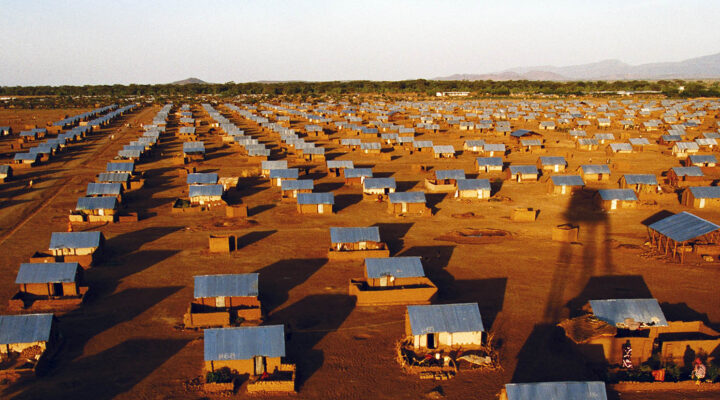With about a month to the deadline issued by the Kenyan government to close the Kakuma and Dabaab refugee camps in the East African country, government agencies have gone silent on how they will make the closures happen.
The two massive refugee camps in northern Kenya are home to more than 430,000 people of 15 nationalities, mostly from neighboring Somalia, South Sudan and the Democratic Republic of the Congo.
Among other statements issued over the years, the Kenyan Ministry of Interior and Coordination of National Government on April 29, 2021, announced via tweet its plan to close the camps: “Kenya has formally communicated to @Refugees its decision to close Dadaab & Kakuma camps by 30 June 2022. Among the precursory activities in GoK’s roadmap is repatriation of refugees to countries of origin & socioeconomic integration of some of them through Work/Residence Permits.”
An Aljazeera report on the same day quoted Fred Matiang’I, Kenya’s cabinet secretary for the Ministry of Interior and Coordination of National Government, as saying the government had resolved to proceed with its earlier decision to close the camps.
“We are serious about completing the repatriation program which we started in 2016, in full view of our international obligations and our domestic responsibility,” he said. “We therefore reiterate our earlier position to close both Dadaab and Kakuma camps by 30th of June, 2022.”
Earlier, the Kenyan government had issued the United Nations High Commissioner for Refugees a 14-day ultimatum to come up with a blueprint for repatriating the Dabaab and Kakuma refugees. The U.N. agency and other organizations around the world didn’t take that threat lightly and advised against a hasty decision that could impact innocent lives and create a humanitarian crisis.
The Kenyan government insists the camps pose a security threat to Kenya, as intelligence reports have linked some persons in the camps to terrorist activities.
The Kenyan government insists the camps pose a security threat to Kenya, as intelligence reports have linked some persons in the camps to terrorist activities.
Relations between Somalia and Kenya have been frosty in recent years, fueled by a border dispute and different approaches on fighting terrorism, as well as issues of national sovereignty. Kenyan security officials have made incursions into Somalia to fight Al-Shabaab and Al Qaeda terrorists.
Somali officials believe Kenyan authorities have been recruiting Somali nationals in the refugee camps to fight Al-Shabaab in Somalia. Even while Somali refugees have poured across the border to escape violence in their homeland.
By this point, the Dadaab and Kakuma camps have been open so long that some current adult residents were born and raised in the camps. Thus, human rights activists oppose closing the camps, citing the hardship such action could impose on people who have lived there for so long and have no other place to call home.
Now, despite the Kenyan government’s announcement about the imminent closure, little has been done about the project.
“Since the announcement that Kakuma and Dadaab camps will be closed by June 30, little has been done to provide the camps’ residents with clarity about their future. Almost none of the refugees returned to their home countries due to security concerns and the lack of economic opportunities presented by such a move. It is also still not clear what third-country options are on the table for many of the camp residents,” Nhial Deng recently told Al-Jazeera. Deng is a South Sudanese who lived in Kakuma refugee camp before moving to Canada, where he now is a university student.
BNG contacted officials of the Ministry of Interior and Coordination of National Government but received no feedback, just redirection to others, who also didn’t answer questions. Likewise, a U.N. official did not reply to a BNG inquiry.
Kenya, with a population of 53.77 million, currently is home to about 551,000 refugees and asylum seekers.
Kenya, with a population of 53.77 million, currently is home to about 551,000 refugees and asylum seekers, according to data provided by the Department of Refugee Services. The vast majority of those live in the two camps targeted for closure.
The history of the Kakuma and Dadaab refugee camps dates to 1992, when Somali refugees were fleeing war that led to the fall of the government of the late Siad Barre into the hands of warlords. Kenya was ill-equipped to handle the influx of refugees and asked UNHCR for assistance.
At the time, temporary refugee camps were established in 14 locations. By 1998, the Kenyan government consolidated those camps in Dadaab and Kakuma.
Anthony Akaeze is a Nigerian-born freelance journalist who currently lives in Houston. He covers Africa for BNG.


